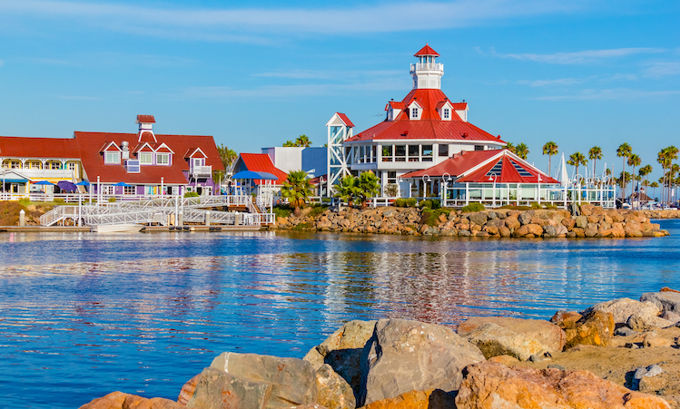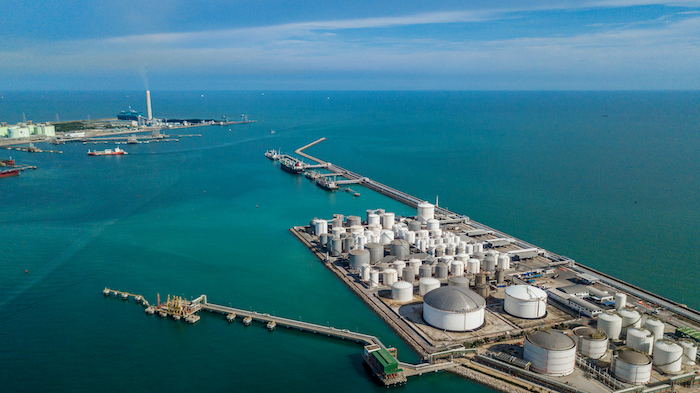
Can Local Wetlands Boards and VMRC Issue a Permit for a Hardened Shoreline if Living Shorelines Cost Too Much?
Examining SB776
This is our final article examining the new living shoreline law, Senate Bill 776 (SB776), adopted in the 2020 session of the Virginia General Assembly. We have written extensively about this new law because it could require large expenditures by commercial and residential waterfront property owners, and it could force commercial waterfront property owners to modify the manner in which they conduct operations at their facilities. We first alerted our readership to these changes in our Virginia Chooses Living Shorelines To Protect Against Erosion article in July, which is the month when SB776 first took effect. Then we examined the ability of the VMRC and Local Wetlands Boards to deny a waterfront property owner’s application to install a hardened shoreline “unless the best available science shows that [a living shoreline is] not suitable.” You can find the new law by looking up Virginia Code §28.2-104.1(D). Next, we go over the “best available science” standard in the new law. Finally, we're going to focus on whether it is appropriate for the Virginia Marine Resources Commission (VMRC), and (by extension) the local wetlands board, to give weight to the cost difference between a living shoreline design and a hardened shoreline design when considering a waterfront property owner’s application to install a hardened shoreline at the property.

(Lucky-photographer/Shutterstock.com) Living shoreline at Old Saybrook, Connecticut
Living Shorelines Can Drive Up Costs
You are probably thinking that the VMRC certainly must take cost into account. Before getting into that, let’s take a deeper dive into the costs associated with a living shoreline.
As with a hardened shoreline, the waterfront property owner considering installation of a living shoreline must hire a professional to design the new shoreline structure. A living shoreline requires a gradual slope connecting the upland to the water. If a gradual slope is not already present at the site then the waterfront property owner who wants to install a living shoreline must build one. Consider a waterfront property with a steep bluff at the waters edge, perhaps created by decades of wave-energy-driven-erosion. Grading back the upland is one way to build a gradual slope between upland and water, with resulting shrinkage of lot size. Another way to create the gradual slope, with no loss of upland acreage, is to place soil – perhaps a considerable volume of soil – in the water to recreate the slope lost through erosion. Doing this requires the Commonwealth to convey a portion of its bottomland to the waterfront property owner, with the pleasing result that this technique will expand the size of the acreage upland. The specific varieties of plants suited to the shoreline environment must be installed in order to vegetate the slope. Protecting the living shoreline (and the newly planted vegetation) from erosion will probably require installation of a sill, groin, breakwater or a combination of these. Read the leading reference document in Virginia, The Living Shoreline Design Guidelines.
There is No “Free Lunch”
It is possible that the living shoreline in some situations will cost more than the hardened shoreline. If, in an effort to hold down costs, the VMRC grants the permit for the hardened shoreline, then other trade-offs come into play. As the VMRC found when it issued its Wetlands Guidelines in 1993, there are costs imposed on our natural resources and on the public whenever a waterfront property owner is allowed to garner the savings that flow from installation of a hardened shoreline. These costs take the form of
- Dirtier water in our creeks, rivers, lakes, ponds, bays and territorial sea
- Worsened flooding of waterfront properties
- Diminished commercial stocks of finfish, crabs, and oysters
There is a cost to be paid by someone no matter which way we turn. Or, to put it another way, this is another situation where there is no free lunch.

Aaron of L.A. Photography. Living shoreline on Lake Michigan in Sheboygan, Wisconsin
What does the New Law Say about the VMRC’s Ability to Consider Cost?
On the question of cost, as with other questions, the VMRC is bound to follow the language as adopted by the General Assembly and signed into law by the Governor. The relevant portion of the new law reads as follows:
The Commission shall permit only living shoreline approaches to shoreline management unless the best available science shows that such approaches are not suitable. If the best available science shows that a living shoreline approach is not suitable, the Commission shall require the applicant to incorporate, to the maximum extent possible, elements of living shoreline approaches into permitted projects.
The language in the statute does not explicitly say whether the VMRC should consider cost but it does say that a living shoreline may not be “suitable” at some waterfront properties. By placing the suitability concept in the law the General Assembly probably opened the door for the VMRC to consider cost. After all, the General Assembly has already told us that economic impacts must be considered in connection with management of Virginia’s wetlands resources. Through enactment of Virginia Code §28.2-1301 the General Assembly declared that the policy in Virginia for managing the state’s wetlands resource is that “the despoliation and destruction of wetlands” must be balanced against “necessary economic development”.
But let’s start out with a quick look at situations in the resource protection statutes where the agency is given explicit direction one way or the other on cost. We look to examples in other resource protection statutes because SB776 is a resource protection statute designed to safeguard our water and our wetlands.
Examples in the Federal Resource Protection Statutes Where the Agency Cannot Consider Cost
There are resource protection statutes at the federal level that provide a lot of guidance on the extent to which the agency is supposed to consider cost. One example is the federal Endangered Species Act. For some of the decisions the resource protection agency makes under that law it must choose the outcome dictated by the “best available science” no matter the cost. As the U.S. Supreme Court explained in 1978, "beyond doubt . . . Congress intended endangered species to be afforded the highest of priorities," and the "plain intent of Congress in enacting [the] statute was to halt and reverse the trend toward species extinction, whatever the cost." Tennessee Valley Authority v. Hill, 437 U.S. 153, 174 & 184 (1978). When dealing with statutes of this type, if the “best available science” suggests a way to safeguard the resource identified for protection in the statute then that option must be selected even if it is expensive.
In 2001 the U.S. Supreme Court gave us another example, this time in the Clean Air Act, where cost must be ignored when the agency takes a certain action to protect the air that we breathe. (There are other parts of the Clean Air Act where the agency must make other decisions that require it to consider cost; we will discuss one of those situations later in this article.) Here is what the Court said about cost when the EPA is setting National Ambient Air Quality Standards:
Section 109(b)(1) instructs the EPA to set primary ambient air quality standards "the attainment and maintenance of which . . . are requisite to protect the public health" with "an adequate margin of safety." 42 U.S.C. § 7409(b)(1). Were it not for the hundreds of pages of briefing respondents have submitted on the issue, one would have thought it fairly clear that this text does not permit the EPA to consider costs in setting the standards. The language, as one scholar has noted, "is absolute." D. Currie, Air Pollution: Federal Law and Analysis 4-15 (1981). The EPA, "based on" the information about health effects contained in the technical "criteria" documents compiled under § 108(a)(2), 42 U.S.C. § 7408(a)(2), is to identify the maximum airborne concentration of a pollutant that the public health can tolerate, decrease the concentration to provide an "adequate" margin of safety, and set the standard at that level. Nowhere are the costs of achieving such a standard made part of that initial calculation.
Whitman v. Am. Trucking Ass'ns, 531 U.S. 457, 465 (2001).

(Avigator Fortuner/Shutterstock.com) Hardened shoreline at a tank farm for bulk petroleum and gasoline storage
Examples in the Federal Resource Protection Statutes Where the Agency Must Consider Cost
Other statutes require resource protection agencies to consider cost when making a resource protection decision. Legislatures typically make this clear by enacting terms into the statute such as “feasible”, “practicable”, “economically feasible/practicable” or “cost-benefit”. For example, the federal Safe Drinking Water Act commands the EPA to make drinking water safe for humans by setting a Maximum Contaminant Level (“MCL”) for each of the many chemicals found in drinking water that could threaten our health. When setting the MCL, the statute, at 42 USCS § 300g-1, commands the EPA to consider “incremental costs and benefits”.
The federal Clean Air Act provides another example. Under that law, a refinery or factory, if it will have air emissions that cross certain thresholds, and it is proposed to be built at a location with overall good air quality, must install “best available control technology” (“BACT”) on its smokestack to preserve air quality. As required by 42 USCS § 7479, the EPA evaluates whether the proposed design satisfies BACT “on a case-by-case basis, taking into account energy, environmental, and economic impacts and other costs”.
So there are situations where the language in the statute clearly commands the resource protection agency to consider cost. The language in SB776 is not explicit. There are however a line of cases that provide guidance for how to handle the cost issue in statutes with wording similar to that found in SB776.
VMRC Should Consider Cost when Deciding a Shoreline Application under SB776
In 2015 the U.S. Supreme Court decided Michigan v. EPA, 576 U.S. 743 (2015). That case required the Court to interpret yet another piece of the Clean Air Act, this time dealing with hazardous air pollutants released into the air by power plants. The specific part of the statute said that, if EPA “finds . . . regulation is appropriate and necessary after considering the results of the study [it] shall regulate [power plants]”. The EPA, after it considered the study referenced in the statute, decided that it should regulate power plants. The EPA found, however, that regulating the industry would impose an annual cost of nearly $10B on the industry. Id. At 749. Conversely, the EPA estimated the new regulation would deliver benefits valued at $4M to $6M per year. Id. The EPA was confronted at the Supreme Court with this large disparity between a $10B cost and a relatively modest benefit of $6M. So, the EPA took that position that the language in the statute was unclear on the question of how to handle the cost associated with its decision. The lack of clarity, according to EPA, gave it the power to choose to ignore cost. The Supreme Court ruled otherwise because the statute instructed the EPA to regulate the power plants only if doing so was, in the judgment of the EPA, “appropriate and necessary”. The Court held that the EPA could not decide that its action was “appropriate” in that circumstance without taking cost into account:
Read naturally in the present context, the phrase “appropriate and necessary” requires at least some attention to cost. One would not say that it is even rational, never mind “appropriate,” to impose billions of dollars in economic costs in return for a few dollars in health or environmental benefits. In addition, “cost” includes more than the expense of complying with regulations; any disadvantage could be termed a cost. EPA’s interpretation precludes the Agency from considering any type of cost — including, for instance, harms that regulation might do to human health or the environment. The Government concedes that if the Agency were to find that emissions from power plants do damage to human health, but that the technologies needed to eliminate these emissions do even more damage to human health, it would still deem regulation appropriate. No regulation is “appropriate” if it does significantly more harm than good.
Michigan v. EPA, 576 U.S. 743, 752 (2015) (internal citation omitted).
In a recent federal Clean Water Act case, one of the federal Courts of Appeals built upon the foundation that the Supreme Court established in Michigan v. EPA by stating that “Indeed, agencies are ordinarily required to consider the relative costs and benefits of a regulation as part of reasoned decision making.” Cooling Water Intake Structure Coalition v. United States EPA, 905 F.3d 49, 68 (2018).
The teaching in these federal case precedents is that, in the arena of environmental regulation, cost must be considered when government makes natural resource management decisions. This commonsense approach in the federal law dovetails neatly with the specific legislation in Virginia regarding wetlands management, which holds at Virginia Code §28.2-1301 that “the despoliation and destruction of wetlands” must be balanced against “necessary economic development”.

(TSN52/Shutterstock.com) A living shoreline
What this Means for Waterfront Property Owners Initiating a Joint Permit Application for a Shoreline Stabilization or Infrastructure Project
If you are submitting a joint permit application (JPA) for a shoreline stabilization or infrastructure project you are doing so at a time of uncertainty at the Local Wetlands Board and at the VMRC due to the fact that SB776 only recently come into force. The resource protection agencies are working hard to draft their new procedures and guidelines to implement the legal requirements of this new law. Our team of Waterfront Property Law attorneys have worked hard to inform themselves regarding the issues that you will face in the processing of your JPA. You should expect headwinds at the regulatory agencies if your project includes a hardened shoreline. Although we cannot promise a particular outcome, favorable or otherwise, our team has the legal knowledge that positions us to help you build into your JPA the type of information that will increase the probability for a good result on your shoreline stabilization or infrastructure project.
Read my previous articles examining the VMRC's implementation of SB776 and the "best available science" standard, or my article about Virginia chooses living shorelines to protect against erosion. Contact us if you have any questions or concerns.
